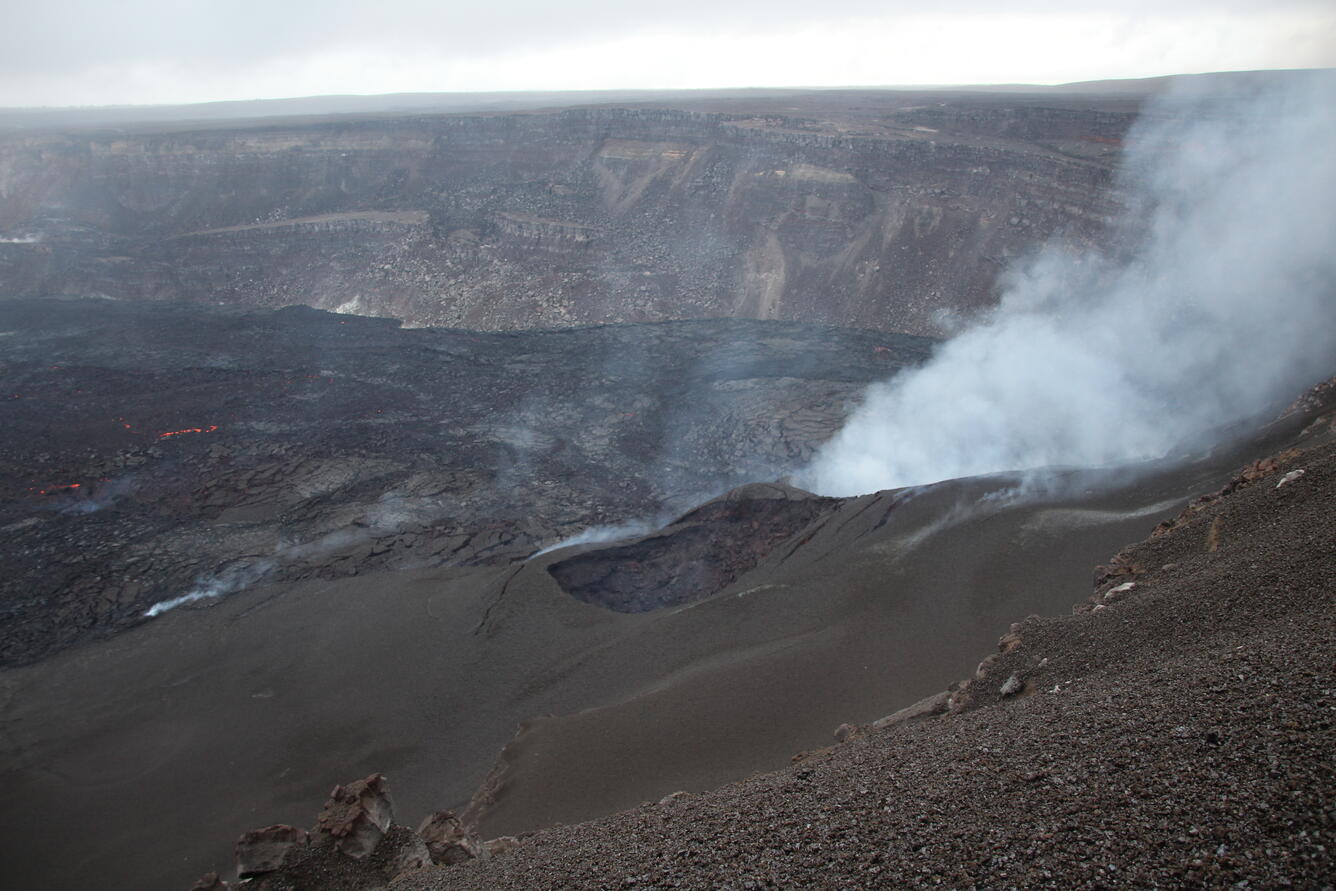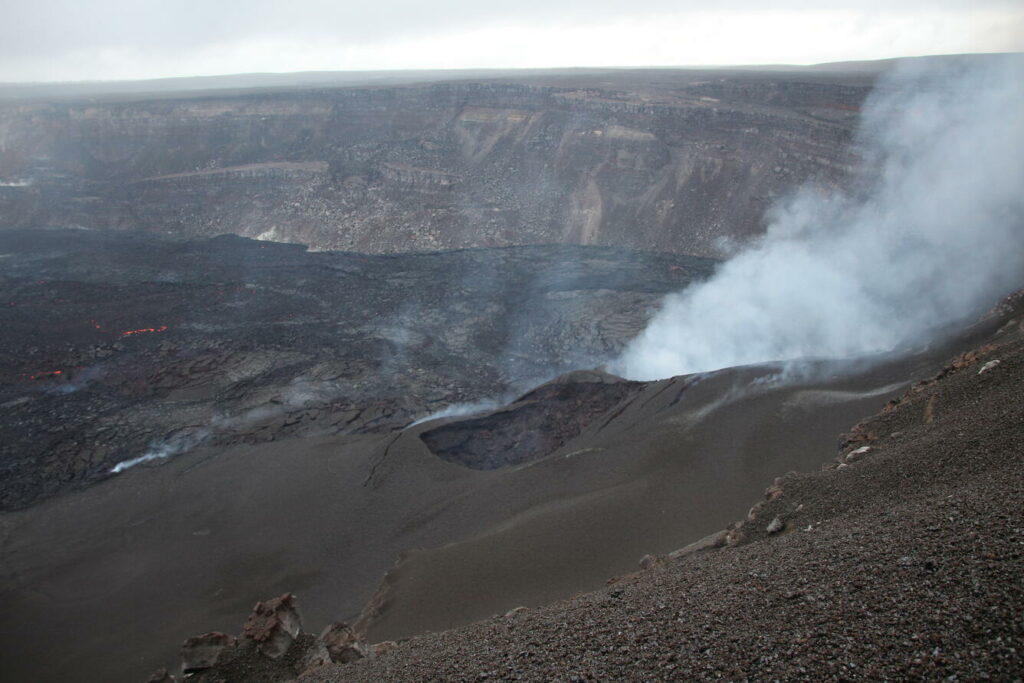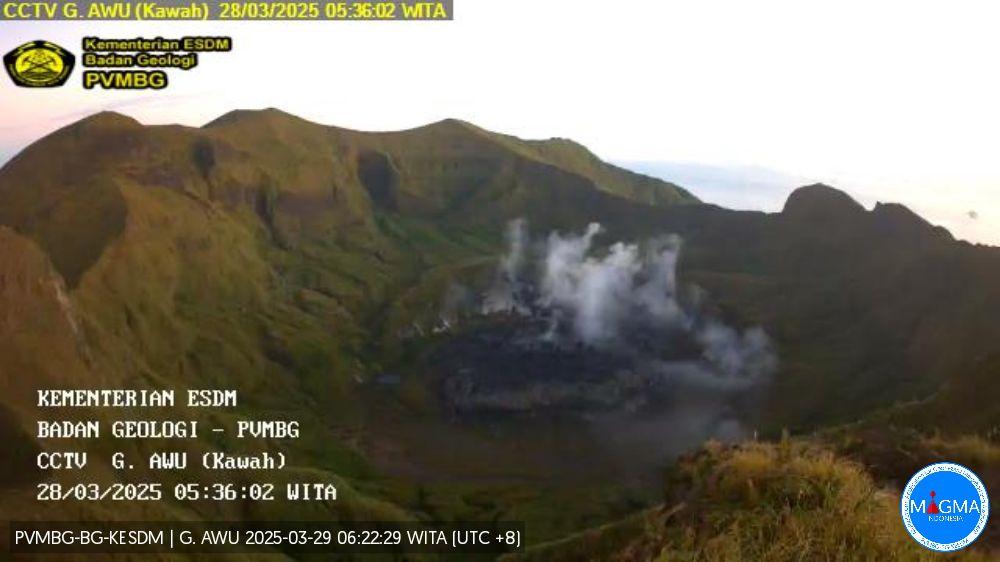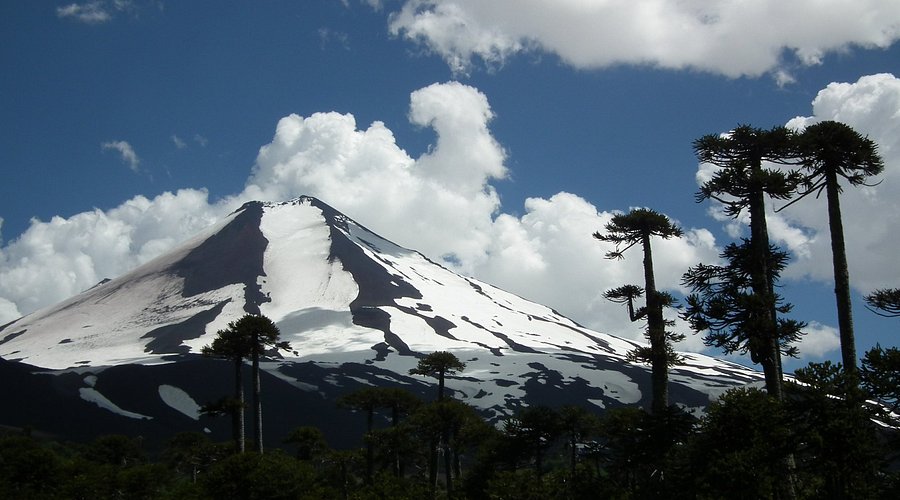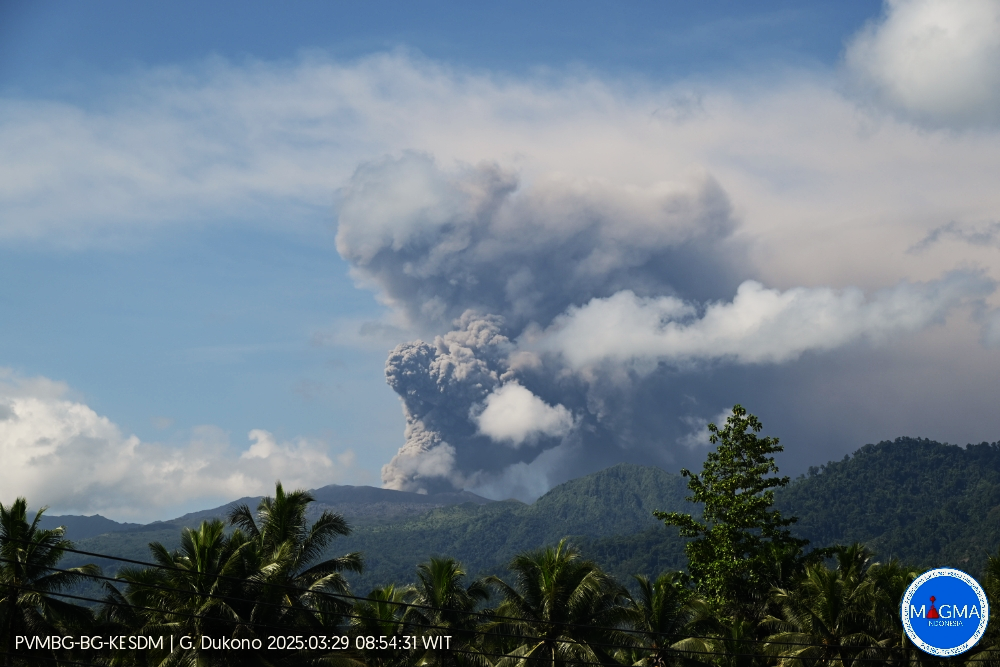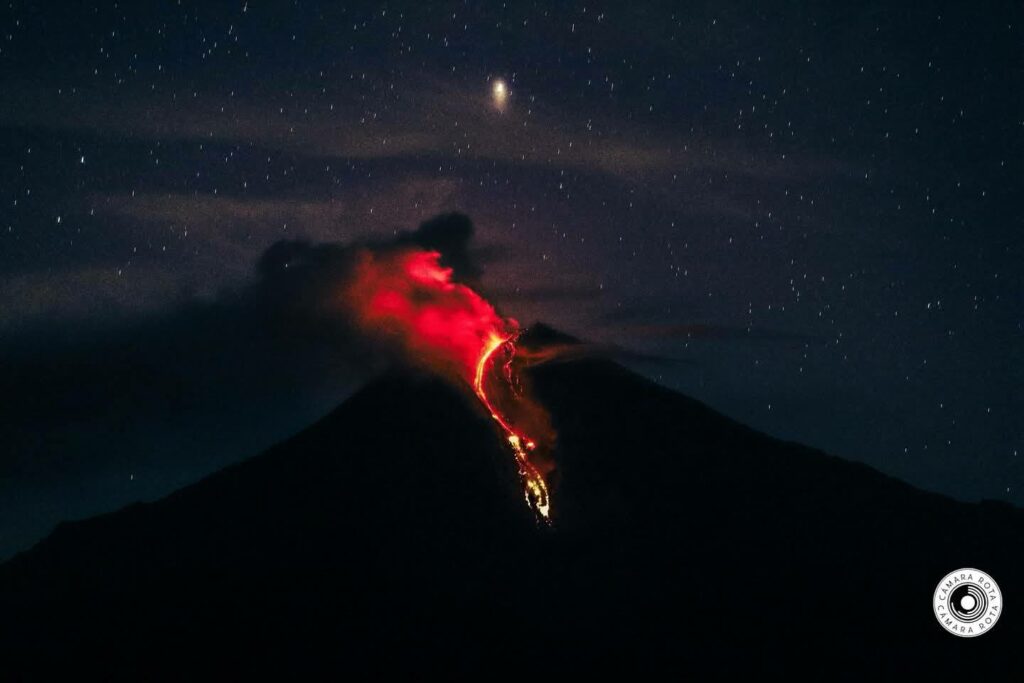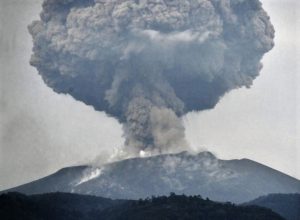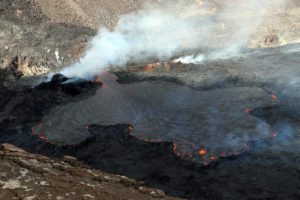March 31 , 2025.
Hawaii , Kilauea :
Summit Observations:
Episode 15 ended on March 26, 2025. Spots of orange glow can still be seen on the crater floor at night as the erupted lava continues to cool.
The condition of the vents after episode 15 appears substantially different than after the previous eruptive episodes. A small opening in the south vent continues to degas and glow weakly at night. The north vent was inactive for much of the high fountaining of episode 15 and was largely infilled with tephra and spatter from the south vent, so vent glow is absent at the north vent. It may be that the north vent, and to a lesser extent the south vent as well, has become somewhat blocked or sealed by erupted material from episode 15. Overall, vent glow is substantially less than following previous episodes.
Tiltmeters at the summit recorded about 9 microradians of deflation at Uēkahuna (UWD) and 7 microradians of deflations at Sand Hill (SDH) during episode 15. Since the current pause began, SDH and UWD tiltmeters have each recorded just over 5 microradians of inflationary tilt.
View of north vent from the northwest, nearly 12 hours after the end of episode 15 of the eruption at Kīlauea’s summit. Tephra covers the slopes of north vent, and the area to the north, giving the appearance of a surface covered in brown sand. At the time this photo was taken, only south vent (right) had any degassing of note, as evidence by white steam (mostly water vapor) rising. Oozeouts on the crater floor are visible in the middle left of the photo.
Immediately following the end of fountaining on March 26, seismic tremor decreased to near zero. Intermittent tremor returned the following day (March 27), though at lower levels than during earlier pauses. Variably weak tremor has continued since then.
Volcanic gas emissions likely remain elevated above background, though possibly at lower levels than during other pauses. SO2 emission rates during previous pauses were approximately 1,000 t/d. Wind conditions and widespread vog continue to prevent updated emission rate measurements. Note that the persistent voggy conditions since episode 15 are the result of weak winds allowing the very high levels of gas emissions from episode 15 to linger over the area, rather than because of current levels of gas emissions.
Strands of volcanic glass known as Pele’s Hair, as well as small chunks of tephra, have been reported on surfaces throughout the summit area of Hawai’i Volcanoes National Park and surrounding communities.
Source : HVO
Photo : N. Deligne.
Indonesia , Awu :
Increased low-frequency (LF) earthquakes on Mount Awu, North Sulawesi.
Mount Awu is located at coordinates 3.6828460o N and 125.455980o E, with a maximum elevation of 1,320 meters above sea level.
Mount Awu’s current activity level has been Level II (Alert) since February 2, 2025. The latest developments in Mount Awu’s activity through March 29, 2025, are as follows:
There was an increase in low-frequency (LF) earthquakes on March 28, 2025, related to fluid movement beneath Mount Awu. Increased earthquakes often also indicate the movement of magma toward the surface. This condition is accompanied by the recording of a relatively high number of shallow volcanic (VB) earthquakes. Visual observations since March 1, 2025, show that surface activity continues to be present in the form of smoke emissions from the crater, at a height of approximately 10 to 200 meters above the dome. The emission activity continues to fluctuate and there is no significant, continuous increase.
Monitoring the deformation of Mount Awu using an inclinometer at the Puncak station continues to show pressure buildup at depth.
Visual and instrumental observations show that magmatic activity and pressure buildup processes are still ongoing on Mount Awu. With the recording of LF-type earthquakes, this indicates a new phase in the period of increased activity on Mount Awu, which has been ongoing since April 2024. Potential hazards from Mount Awu include eruptions that could produce the ejection of incandescent material and/or pyroclastic flows. The risk of volcanic earthquake swarms or lava dome collapse could occur if the pressure in Mount Awu’s magmatic system suddenly and significantly increases. Another potential hazard is volcanic gas emissions around the crater, which can be life-threatening if the inhaled concentration exceeds the safety threshold.
Based on the results of visual and instrumental monitoring through March 29, 2025, Mount Awu’s activity level remains at Level II (WASPADA).
Source : PVMBG
Photo : Magma Indonésie.
Chile , Llaima :
Special Report on Volcanic Activity (REAV), Auracania region, Llaima Volcano, March 29, 2025, 7:00 a.m. local time (mainland Chile).
The National Geology and Mining Service of Chile (Sernageomin) publishes the following preliminary information, obtained using the monitoring equipment of the National Volcanic Monitoring Network (RNVV), processed and analyzed at the Southern Andean Volcanological Observatory (OVDAS):
On Saturday, March 29, 2025, at 4:12 a.m. local time (07:12 UTC), monitoring stations installed near the Llaima Volcano recorded an earthquake associated with rock fracturing (volcano-tectonic type).
The characteristics of the earthquakes after their analysis are as follows:
TIME OF ORIGIN: 04:12 local time (07:12 UTC)
LATITUDE: 38.815° S
LONGITUDE: 71.702° W
DEPTH: 4 km
LOCAL MAGNITUDE: 3 (ML)
OBSERVATIONS:
Following the main event, four earthquakes with similar characteristics but lower energy were recorded.
The Volcanic Technical Alert remains at Green.
Source : Sernageomin
Photo : Tripadvisor
Indonesia , Dukono :
An eruption of Mount Dukono occurred on Sunday, March 30, 2025, at 11:50 WIT with an observed ash column height of ± 1800 m above the peak (± 2887 m above sea level). The ash column was observed to be white to gray in color with a thick intensity, oriented toward the southeast. At the time of writing, the eruption was still ongoing.
VOLCANO OBSERVATORY NOTICE FOR AVIATION – VONA
Issued : March 30 , 2025
Volcano : Dukono (268010)
Current Aviation Colour Code : ORANGE
Previous Aviation Colour Code : orange
Source : Dukono Volcano Observatory
Notice Number : 2025DUK047
Volcano Location : N 01 deg 41 min 35 sec E 127 deg 53 min 38 sec
Area : North Maluku, Indonesia
Summit Elevation : 3478 FT (1087 M)
Volcanic Activity Summary :
Eruption with volcanic ash cloud at 02h50 UTC (11h50 local).
Volcanic Cloud Height :
Best estimate of ash-cloud top is around 9238 FT (2887 M) above sea level or 5760 FT (1800 M) above summit. May be higher than what can be observed clearly. Source of height data: ground observer.
Other Volcanic Cloud Information :
Ash cloud moving to southeast. Volcanic ash is observed to be white to gray. The intensity of volcanic ash is observed to be thick.
Remarks :
Eruption and ash emission is continuing. Eruption recorded on seismogram with maximum amplitude 34 mm. Tremor recorded on seismogram with maximum amplitude 2 mm.
Source et photo : Magma Indonésie.
Ecuador , Sangay :
SANGAY VOLCANO DAILY STATUS REPORT, Saturday, March 29, 2025.
Information Geophysical Institute – EPN.
Surface Activity Level: Moderate, Surface Trend: No change
Internal Activity Level: Moderate, Internal Trend: No change
Seismicity: From March 28, 2025, 11:00 a.m. to March 29, 2025, 11:00 a.m.:
Seismicity:
Below is the count of seismic events recorded at the reference station.
Explosion (EXP): 15
Precipitation/Lahars:
No rainfall has been recorded in the volcano area. **Heavy rainfall could remobilize accumulated material, generating mud and debris flows that would cascade down the volcano’s slopes and flow into adjacent rivers.
Emission/Ash Column:
Due to adverse weather conditions, gas and ash emissions could not be observed using either the surveillance camera network or satellite imagery. The Washington-based VAAC agency has not released any activity reports related to the volcano.
Another monitoring parameter:
Over the past 24 hours, the MIROVA-MODIS and MIROVA-SENTINEL satellite systems each recorded one thermal anomaly. However, the MIROVA-VIIRS and FIRMS systems detected two and 11 thermal anomalies, respectively.
Observation:
From yesterday afternoon until the closing of this report, the volcano remained completely cloudy.
Alert Level: Yellow
Source : IGEPN
Photo : Camara Rota / FB.

